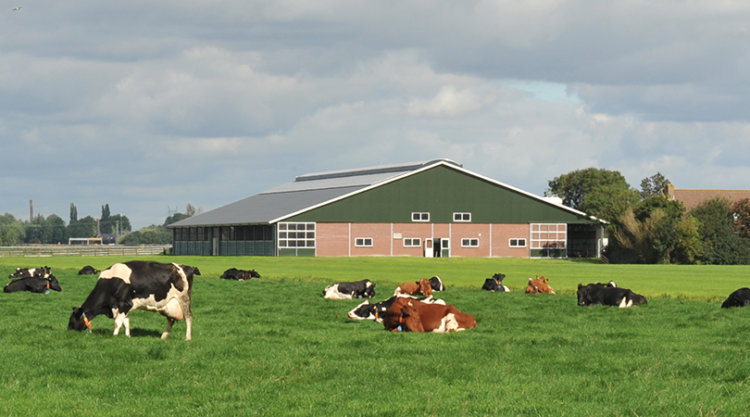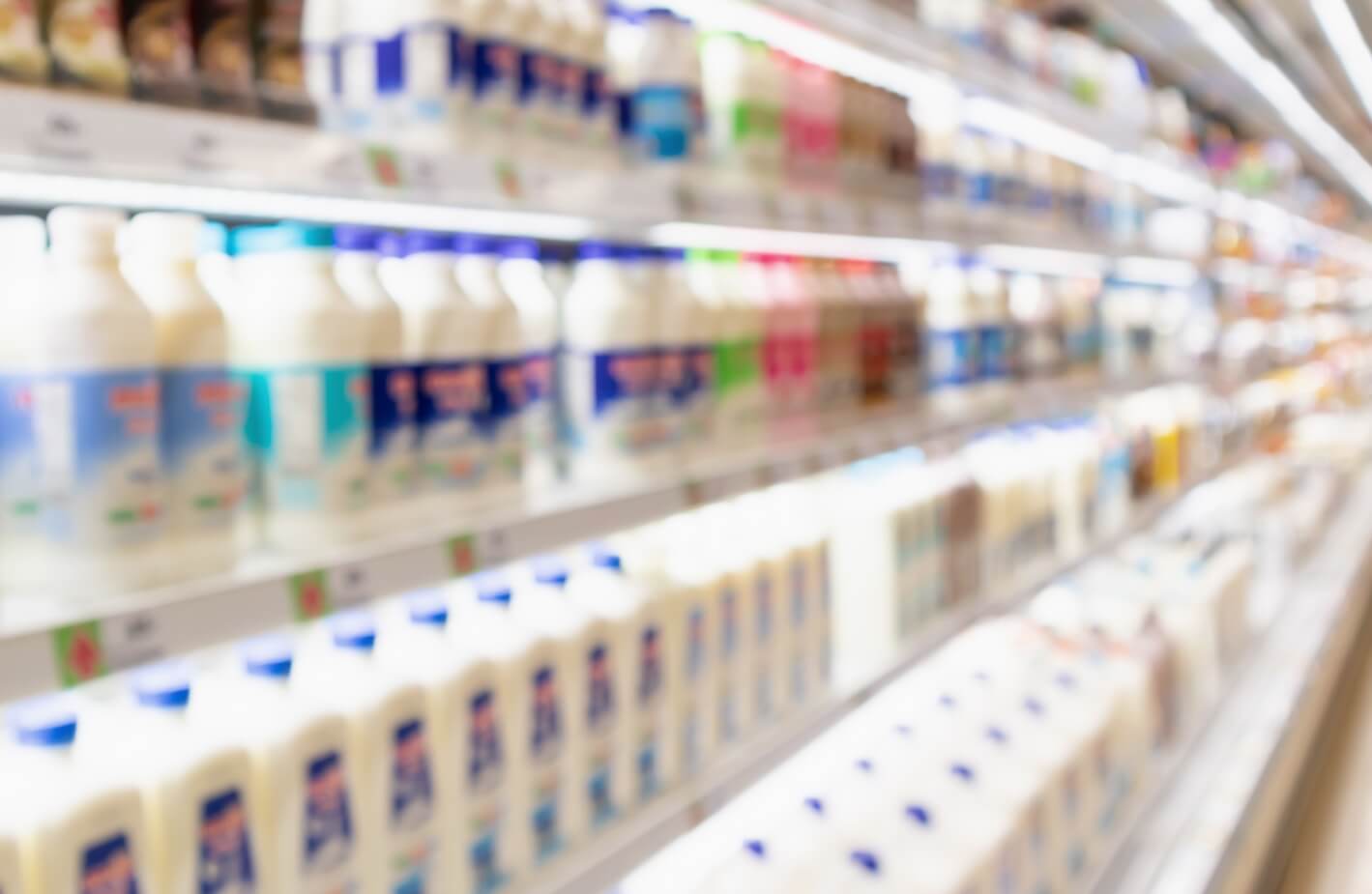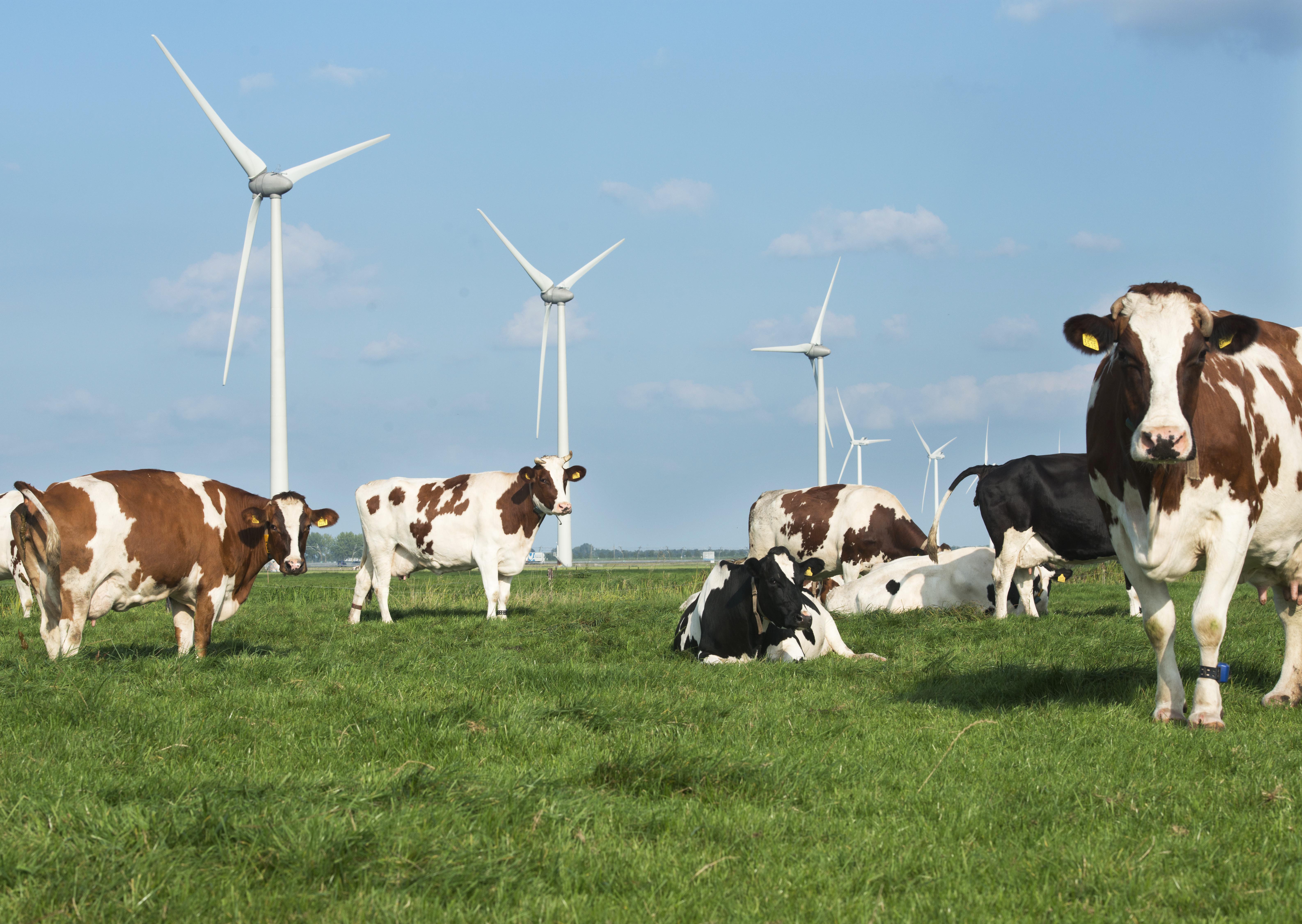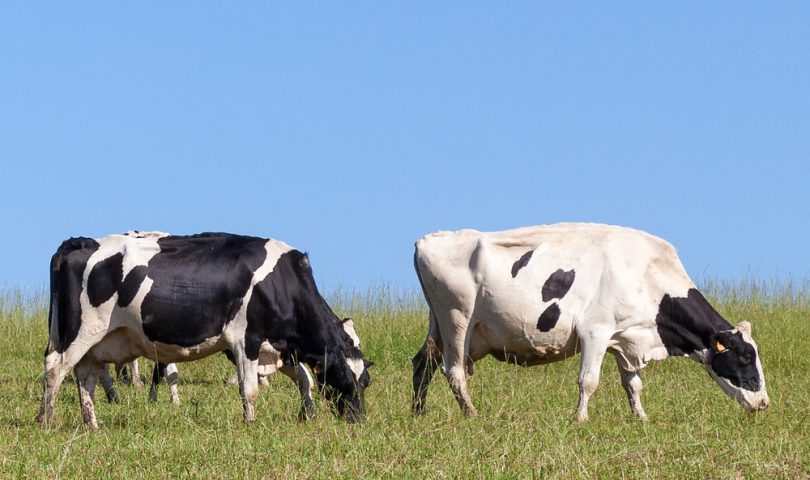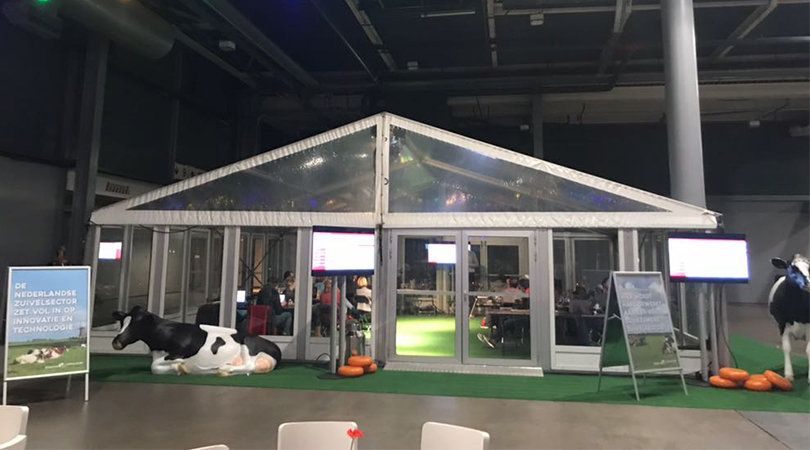
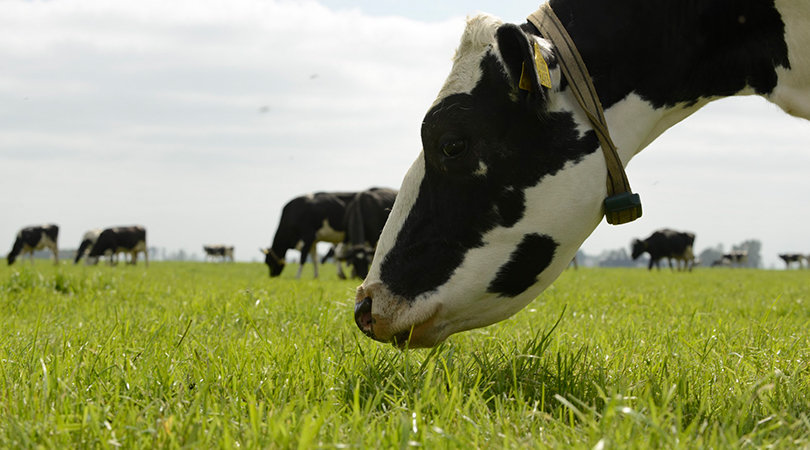
The Netherlands, cattle grazing, and dairy are inextricably linked. One-fourth of Dutch lands are used for cattle grazing. Cows in the pastures typify the Dutch landscape. The Dutch Dairy Association is therefore a major advocate of cattle grazing.
Sustaining grazing practices is also important for the dairy industry. The cow characterizes the Dutch landscape and the public places great value on cows in the pastures. Grazing also contributes to a cow’s natural feeding behavior. The dairy industry actively promotes grazing practices by introducing free-range dairy products on the market and through other financial incentives.
In 2012, the members of the Dutch Dairy Association, in cooperation with LTO Netherlands, introduced the Grazing Agreement. The Grazing Agreement is a contract among more than 80 organizations (companies, governments, and social organizations) to sustain grazing practices. Organizations from all corners of the sector are working to increase the percentage of dairy farms that practice grazing. They are developing know-how and expertise and spreading this through research and education, providing financial incentives, and guiding newly free-range farms through their transition to grazing. In 2018, 82% of dairy farms practiced grazing.
What does grazing entail?
Cattle naturally graze 6 to 8 hours a day. The dairy industry has set 120 days per year and 6 hours per day as the lower limit for a dairy farm to receive the full grazing premium. In general, most dairy farms allow their cattle to graze longer. A quarter of all free-range dairy farms allow their cows to graze day and night.
The grazing guarantee
Because free-range dairy farms receive a premium, dairy companies monitor their grazing practices. They do this according to a plan that is approved by an independent certification body, and which outlines the system and frequency of the checks on the dairy farms. Dairy factories are audited every year by an independent certification body, as well.
At least 40% of the free-range dairy farms receive a visit during the grazing season. At least 15% of these checks can be done by the farm itself, and at least 25% of dairy farms are checked by the independent certification body.
The check is to see if a dairy farm’s cows spend time in the pastures or if they stay in the barns. Even without cows present, it is easy to tell if a farm’s cows are grazing. The pastures are fenced in, and there are cow patties in the fields and visible hoofprints on the paths.
Dairy companies pick up free-range milk using a designated milk truck, and they process this milk separately from other milk at the factory. Milk that is not separated in transport cannot be processed as free-range milk. A dairy company may choose not to separate free-range milk in transport or processing for a time, such as when demand for free-range dairy products is low. Thanks to the separation of the milk and the monitoring process, consumers always know when they are buying free-range dairy.
Not all farms choose to graze
Some dairy farms choose to keep their cattle inside throughout the year, which means they choose not to institute grazing practices. This may be because they do not have enough land or because of the added time or cost. A farmer also needs enough land to grow grass to feed their cows through the winter months – land that they cannot otherwise use for grazing.
A cow which stays in the barn is not by definition worse than a cow that grazes. Modern barns meet modern requirements, such as those around animal welfare. Such barns provide a great deal of comfort for the cows that live there.
Despite the fact that the dairy sector is an avid supporter of grazing, it does not support a legal requirement for grazing. Such a requirement has been advocated for several years by several different parties. But it would put an end to one of the few successful market and earnings models, where the market pays for sustainable food production.
More specifically, to make grazing efforts affordable for dairy farmers, the dairy sector has set up a successful market and earnings model by way of the grazing premium. For an average fully free-range dairy farm, this premium comes to about €14,000 per year. All told, dairy companies pay more than €175 million in grazing premiums to dairy farms.
Neighboring countries have not yet developed such collective action around grazing, and shares of free-range farms in these regions are dropping. The Dutch dairy sector, on the other hand, has taken things into its own hands, and as a result has become a role model of how the free market can finance and advance sustainability. The Netherlands has demonstrated how the sector, driven by growing demand in the market, can make sustainability a reality.
